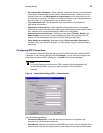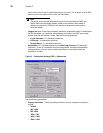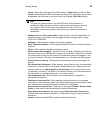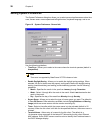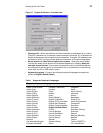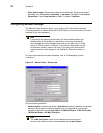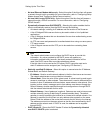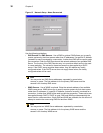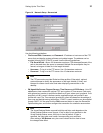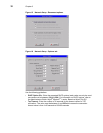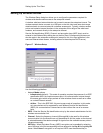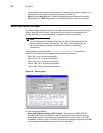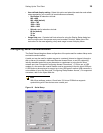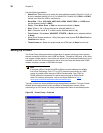
Setting Up the Thin Client 29
• No local Ethernet, Modem dialup only - Select this option if the thin client will access
a network through a dial-up modem (for more information, refer to "Configuring Dialup
Modem Access"and "Configuring Serial Communications."
• No local LAN, invoke PPPoE only - Select this option if the thin client will access a
network through a PPPoE connection. For more information, refer to "Configuring
PPPoE Access."
• Dynamically allocated over DHCP/BOOTP - Selecting this option enables the thin
client to automatically receive (from the DHCP server) the following:
• All network settings, including its IP address and the location of the file server.
• A list of PNAgent/PNLite servers that may be used to obtain a list of published
applications.
• A list of Windows domains that can be selected for use when authenticating a user
for PNAgent/PNLite.
• An FTP user name and password to be authenticated when using non-anonymous
FTP server access.
• A list of Rapport servers and the TCP port to be used when contacting those
servers.
Note
The network administrator must configure the DHCP server to provide this
information. Any value provided by the DHCP server will replace any
information entered locally however, that locally entered information will be
used if the DHCP server fails to provide replacement values.
If the thin client is to be used as an LPD server, DHCP cannot be used and a
static IP address must be assigned (see “Configuring LPD Services” ).
• Statically specified IP Address - Select this option to manual enter the IP Address,
Subnet Mask, and Default Gateway.
• IP Address - Must be a valid network address in the thin client server environment.
The network administrator must provide this information.
• Subnet Mask - Enter the value of the subnet mask. A subnet mask is used to gain
access to machines on other subnets. The subnet mask is used to differentiate the
location of other IP addresses with two choices: same subnet or other subnet. If the
location is other subnet, messages sent to that address must be sent through the
Default Gateway, whether specified through local configuration or through DHCP.
Ask the network administrator for this value.
• Default Gateway - Use of gateways is optional. Gateways are used to interconnect
multiple networks (routing or delivering IP packets between them). The default
gateway is used for accessing the Internet or an intranet with multiple subnets. If no
gateway is specified, the thin client can only address other systems on the same
subnet. Enter the address of the router that connects the thin client to the Internet.
The address must exist on the same subnet as the thin client as defined by the IP
address and the subnet mask. If DHCP is used, the address can be supplied
through DHCP.
• DHCP Vendor ID - Shows the DHCP Vendor ID when the Dynamically allocated
over DHCP / BOOTP option is selected.



